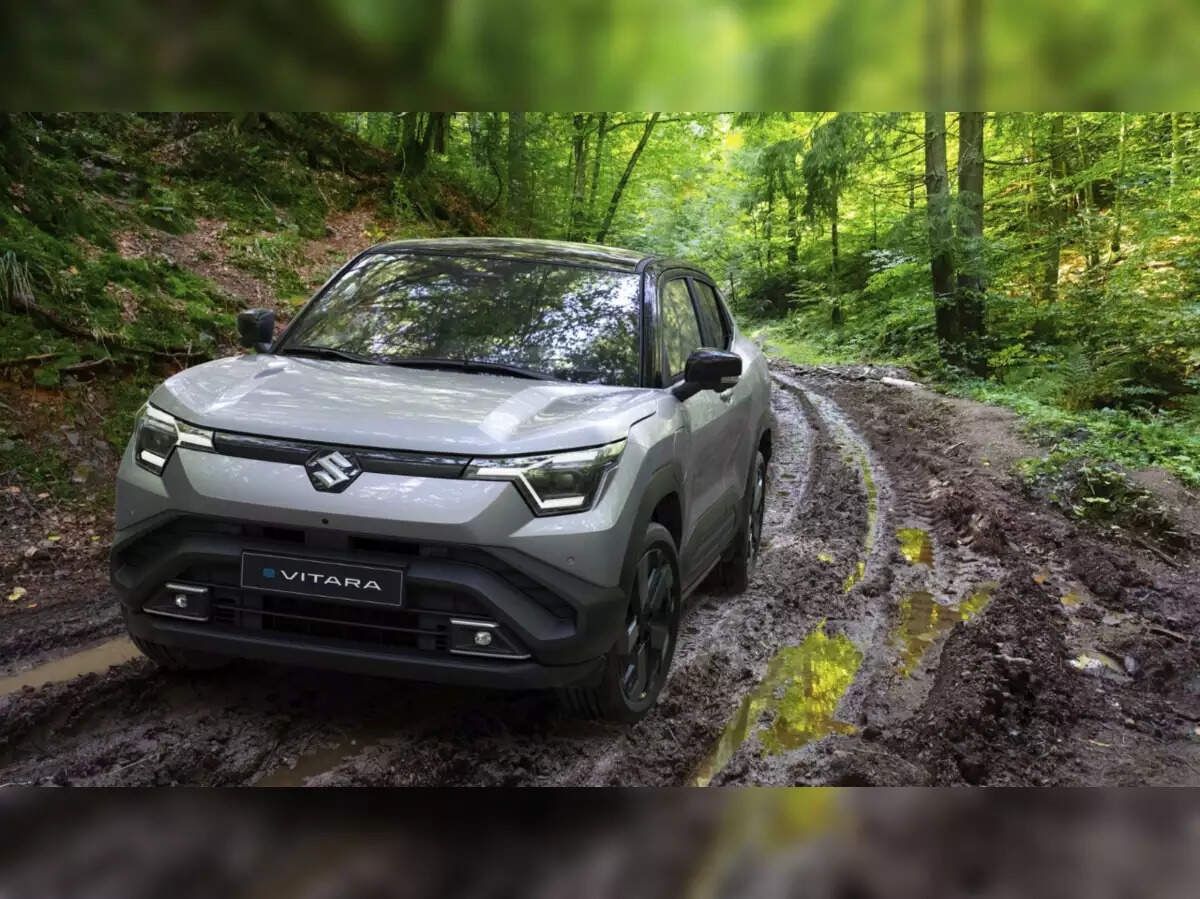[ad_1]

New Delhi: Banking on India’s accelerating shift towards SUVs, Maruti Suzuki India Limited (MSIL), the country’s largest carmaker by volume, on Friday said it will be launching a new SUV this year. However, the company also stressed the importance of reviving the small car segment for the overall growth of the passenger vehicle (PV) industry.
“We will be launching one more SUV this year,” RC Bhargava, chairman, Maruti Suzuki said. However, he did not share further details on the specific model type.
Currently, Maruti Suzuki offers the Brezza, Grand Vitara, Fronx, and Jimny as part of its SUV portfolio.
The new SUV is in addition to its first electric vehicle (EV)– eVitara SUV – which was launched for the India market at the Auto Expo this year and is set to begin its sales by September.
For the current year, its EV production will be around 70,000 units, the bulk of which will be exported and only a small portion will be retained for the domestic market.
Speaking at the company’s Q4 (FY25) media conference call, Bhargava said the company is exporting a large part of EVs because people in India still need to get used to electric cars.
The carmaker has clarified that its EVs will be sold through its existing Nexa retail outlets, in contrast to other OEMs like Tata Motors, which operate separate dealerships for their EV models.
Bhargava further acknowledged that electric cars in India remain expensive, attributing the high costs partly to the underdeveloped component infrastructure for EVs in the country.
“Take the batteries for instance, there is no company yet manufacturing batteries in India at a competitive price. The other components also– most of them the internal parts– are imported. The result is that all electric cars in India become much higher priced. And if they are higher priced then the market for that is limited,” he said.
Meanwhile, Maruti Suzuki has expressed interest and is in talks with the government for manufacturing electric ambulances (e-ambulances) under the PM Electric Drive Revolution in Innovative Vehicle Enhancement (PM E-DRIVE) scheme.
About the capacity expansion, Bhargava noted the work is ongoing on the Phase-II of the Kharkhoda plant in Haryana. In February, Phase-I of the facility was commissioned with an annual production capacity of 250,000 units, and commercial operations have since commenced.
For FY26, the company has earmarked a capital expenditure of about ₹8000- 9000 crore.
Export-driven strategy
Maruti Suzuki highlighted India’s extremely low car penetration rate, with only 34 cars per 1,000 people, among the lowest globally. The company also raised concerns over the domestic market’s sluggish performance, describing it as “very soft,” with projected growth of just 1 per cent to 2 per cent in FY25– terming it as a worrying sign for the broader automotive industry.
Despite a muted outlook for domestic sales, Maruti Suzuki expects its overall volumes to improve in FY26, driven primarily by strong performance in exports. The company is leaning on an export-focused strategy to counterbalance the challenges of a sluggish domestic market and sustain growth momentum.
“We will try to increase exports by about 20 per cent and that is going to be the main driver of our total production, sales, and profits. Along with that, the domestic market growth will remain muted,” Bhargava said.
He remains optimistic about the global export outlook, dismissing fears of an impending global recession. While acknowledging challenges such as trade wars and shifting tariff policies that may cause consumers to hold back on spending, he expressed confidence that these issues will begin to resolve over the next two to three months. “There might be a slight slowing down in global growth rates, but I don’t think it’s going to be anywhere near a recession,” he stated.
Maruti Suzuki has set its sights on reclaiming its earlier 50 per cent market share in the Indian passenger vehicle market by the end of this decade.
Need for Japan-like regulations
Citing Japan’s Kei car model, Bhargava highlighted how these compact cars, governed by separate regulations and benefiting from lower taxes, played a key role in Japan’s shift from motorcycles to affordable four-wheelers. He suggested that India could implement a similar framework to make small cars more accessible, potentially accelerating car ownership across a broader segment of the population.
Maruti Suzuki’s chairman dismissed the idea that the decline in small car sales and the growth of the SUV market is a result of changing aspirations. He called it a “fallacy,” explaining that the real issue is not people’s desire for bigger cars, but rather their inability to afford small cars.
He once again called on the government to reduce taxes and ease compliance costs to make small cars more affordable and viable. Dismissing the belief that India’s car market is shifting purely due to rising affluence, he said, “It is not, as some people seem to think, that India has become affluent and everybody wants to buy the expensive car. That would happen if the number of households having income above ₹12 lakh increased from 12 per cent to 50 per cent.”
On the potential for small hybrid cars, Bhargava noted that while the idea holds promise, such models are still in development. “We have to develop that hybrid small car yet, it doesn’t exist. People are working at it,” he added.
Currently, Maruti Suzuki offers hybrid versions of the Grand Vitara and Invicto in India.
[ad_2]
Source link





